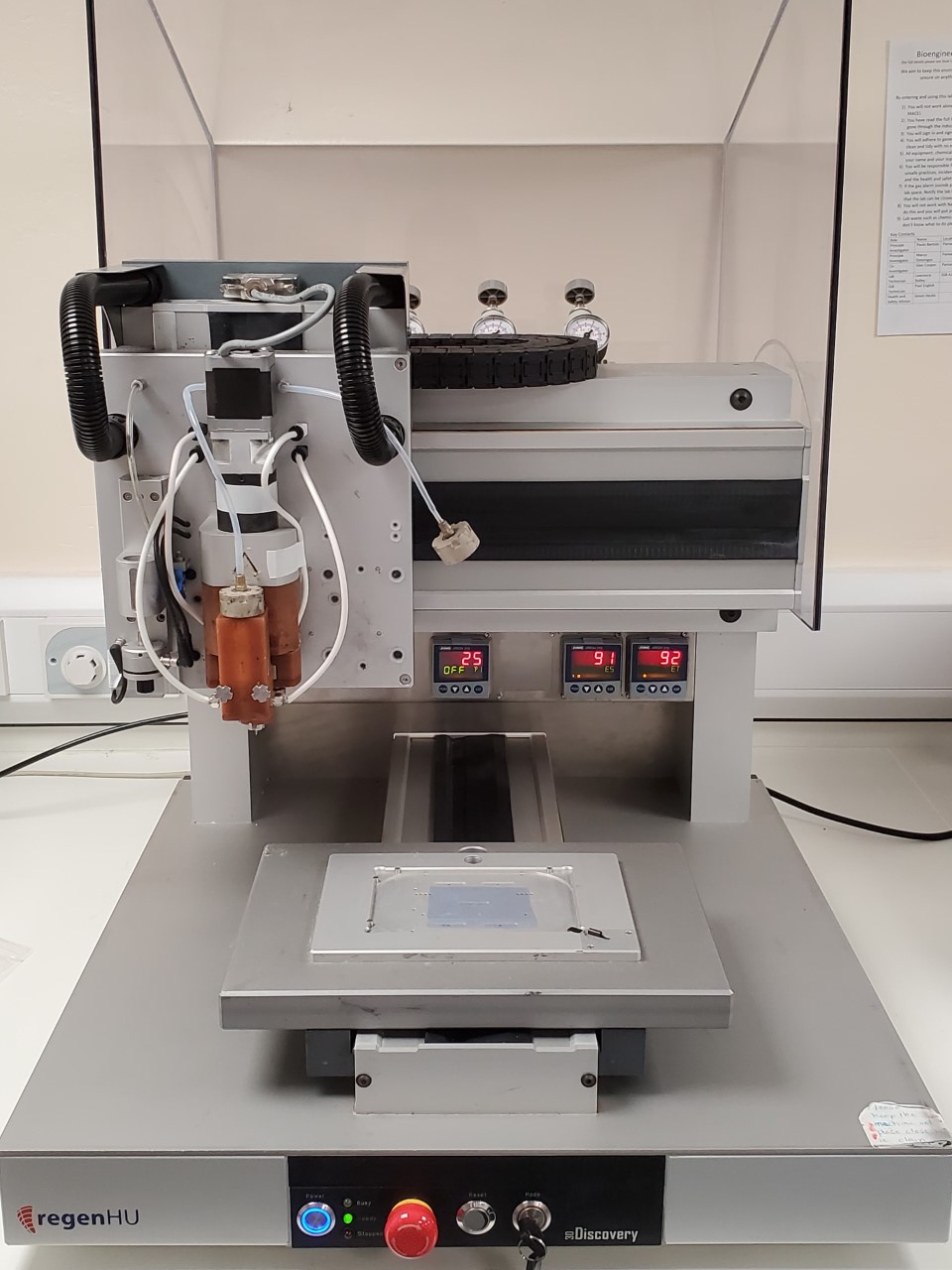
Department of Mechanical, Aerospace and Civil Engineering
Bone Regeneration Lab
Instructions
This is a model of a 3D printer that is used to create bone tissue scaffolds which can heal bone injury in the human body. Designing and manufacturing a tissue scaffold is not simple and all the design and manufacturing parameters must be correct to produce an effective implant for bone healing. The tabs at the top of this window explain some of the important considerations to manufacture a bone tissue scaffold. Please read through this information, then try to run the machine to create your own bone tissue scaffolds for the human body.
3D Printing Machine

This 3D printer is a melt extrusion device, which means that it heats material and forces it out of a nozzle to create a filament. The nozzle moves around the build platform in the x, y and z directions to build a 3D structure – a tissue scaffold. This is possible only if the materials used are both biocompatible and are able to change their state when heated from solid to viscous fluid. The machine shown in the picture in our lab is the RegenHU printer. This is a versatile and cell friendly instrument. It can create three-dimensional models that more closely mimic what happens in living organisms. It allows scientists to pattern cells, biomolecules, and a range of soft and rigid materials in desirable 3D composite structures.
Base Material
The scaffold needs to be constructed from a material that is both biocompatible and able to become a viscous fluid when heated (ideally a thermoplastic). Biocompatible means that it is safe to use in the human body and that the material will be a good environment to grow cells on. Materials like polycaprolactone (PCL) have a low melting temperature of around 60 degrees which will reduce its viscosity further with more heat. It is a biodegradable polyester which means that it will be absorbed in the body and is the most common base material used in the manufacture of bone tissue scaffolds.
Filler Material/Percentage
To change the mechanical and biological properties of the scaffold a filler material can be added to the base material. This could change the mechanical strength and stiffness or even change the way cells interact with the structure. The percentage of the filler will determine the level of these effects but it can also effect the manufacturing adversely due to many fillers not melting at low temperatures like the base material. Hydroxyapatite (HA) is a naturally occurring ceramic that is found in human bones adding this to a scaffold could help mimic conditions in human bone. Tricalcium phosphate (TCP) is a similar mineral ceramic. Other filler materials such as silk or graphene can add extra mechanical strength or bioactivity. These filler materials are processed to create micro or even nano particles or fibres then added to the base material.
Melt Temperature
The temperature setting is important because it will affect the viscosity of the base material as it passes through the machine nozzle to create the filament and also how the scaffold holds its shape. There is a fine balance to get the temperature right, it must be high enough to allow the material to flow freely through the nozzle but low enough to cool quickly so that the material will solidify and hold its shape.
Pore Size
This refers to the size of the holes in the scaffold which make it porous. Hole size is important as they need to be large enough to allow cells and body fluids to pass through the scaffold. But if they are too large cells aren’t able to bridge the gaps and populate the whole scaffold to enable healing to happen. Also pore size can affect the mechanical properties of the scaffold – too porous means low mechanical stiffness.